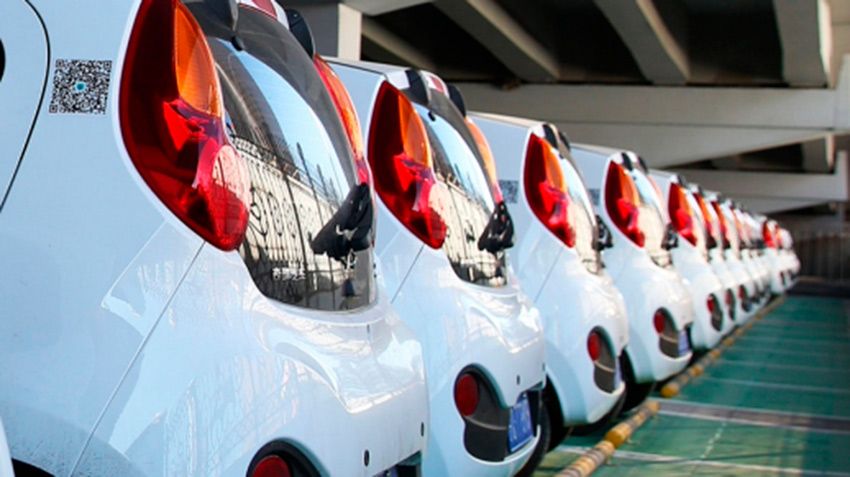Four myths about the Chinese electric cars

13 February 2019
Exposing myths about the Chinese segment of the PEV
The website elektrovesti.net published interesting information about the four myths prevailing in the minds about the fastest growing in the world Chinese electric vehicles market.
Indeed, in China today sold a record number of electric vehicles, and Chinese taxis and buses peacefully conquer the planet. However, the world community is confident that China only produce low quality "DIY", and ordinary Chinese citizens are simply forced to buy them. The electric vehicle industry in China is in a boom phase – the electric car market is already oversaturated so much so that Beijing has to cut benefits. In 2018, mainland China sold 1.3 million electromobiles and PHEV (private passenger and commercial), which is 61% higher than a year earlier. In the fourth quarter in China had 60% of the total number sold in the world of electric vehicles.
Naturally, China is also the leader in production of lithium-ion batteries, as well as the number of fast electric charging stations.
And yet the world community still does not understand the EV industry China seriously. Many, even experts are convinced that China takes exclusively a quantity, not quality. Allegedly, the country churns out disposable electric vehicles, and conducts the process directly, the CPC Central Committee. Experts BNEF refute four myths about the market of electric vehicle in China.
Myth 1: PEV constitute only 1-2% of the sold cars
Yes, two years ago the electric car (+rechargeable hybrids) accounted for only 1% of the total sales of traditional cars. However, approximately the same figures they had in North America, and Japan. However, in the fourth quarter of 2018, the share of electric vehicles amounted to 7% (in December to 8.1%), so that with 2011 it increased by a record 118%.

Myth 2: All the electric cars in China are small and slow
Five years ago in China is really dominated by miniature electric cars with low speed, which surpassed sales of conventional passenger PEV 15 times! However, fresh statistics proves the opposite – the situation has changed dramatically. So, over the past year in China were sold (to private individuals and leasing to legal entities) standard 1.1 million electric and 1.4 million microelectrospray.
By the way, the last category of state benefits may not apply. Moreover, these kids don't even take into account in official statistics, obnaruzhenii the Beijing government. BNEF analysts have concluded that, Yes, "tardigrades" on electric still dominate the Chinese market, but every year I play less important role in the consumer market.
Myth 3: the Government owns all the charging stations
From 2012 to 2015 the major operator of charging stations in China has indeed been a state company monopoly State Grid, which provided the entire country and other energy services. But, by the third quarter of 2018 it has lost its influence and yielded to private provider – company T-Good.
Third place in the ranking of networks of charging stations of electric cars today is also a private company – Star Charge. So, now that private producers charging equipment owns more than half of all of the "chargers" in China.
Myth 4: the Communist party have to buy electric cars
In China there are several national preferential programs for buyers of electric vehicles. They include discounts on the purchase of an electric vehicle and specific conditions for automakers.
For example, in 2019, the government requires that the company issued a certain number of electric vehicles and controlled the fraction of the waste produced through the "exchange of carbon dioxide emissions".
However, not a lesser role played by municipal governments. Local government legitimately impose restrictions on the use of vehicles with internal combustion engines. So, in six major Metropolitan cities (with a population of over 10 million) sale of petrol and diesel car and motorcycle transport rather strictly controlled by the "Singapore system", forcing them to buy back a limited number (for Beijing, for example, is no more than 60 thousand new signs in year) license plates at the auction, where the price easily exceeds the cost of the cars themselves, but the new electric vehicle to the license plate is much easier and cheaper.

Naturally, it is the residents of Chinese cities are the main users of electric vehicles. And the scale here is such that individual Chinese cities are already ahead of entire countries of the West. For example, the PEV markets in Shenzhen and Shanghai, inferior in size only to the Federal US market and the national market of China.
Municipal privileges in the PRC, is often a decisive factor in the formation of markets. So, Beijing is actually cheaper to buy electric than a car, and in Shanghai, where there are benefits, primarily on rechargeable hybrids (PHEV), and they sold more.
Naturally, there is a growing number of Chinese electric vehicles on the world market, which in the coming years will increase by 40% expected by analysts.
In addition, McKinsey, the country could become a world leader in the production of so-called "Autonomous vehicle", i.e. simply robomobile.
For example, in the analytical study Reuters via the activities of 29 of the world's largest manufacturers shows that the total investment in electric transport is already over $300 billion, with about 45% of these funds invested in China.
In addition, the research company Bloomberg NEF (New Energy Finance) offered a fresh forecast of the development of electric vehicles. According to him in 2019 the global market for electric cars will be 2.6 million, of which 57% will have precisely the Chinese market..
|
|
|
Element was not found.








